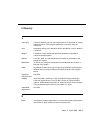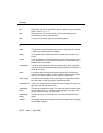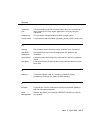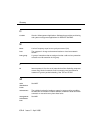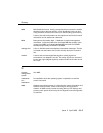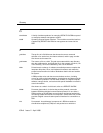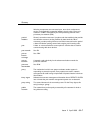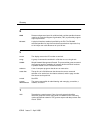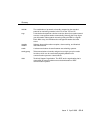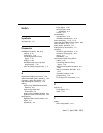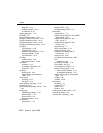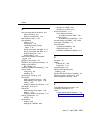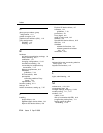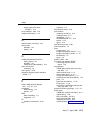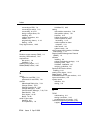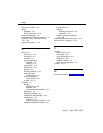
Index
IN-6 Issue 2 April 1996
connecting to PBX, 7-2
connecting to switch
, 7-16
connectivity
, 6-3, B-1
design configurations
, B-1
installing
, 9-2
modem connection
, 6-9
network
, B-1
programming, alarms
, 11-16
starting
, 10-24
Proxy Agent screen
, 10-25
R
Random access memory (RAM), 1-6
removing UNIX software
, 10-6
requirements
disk space
, 1-6
hardware
, 1-9
restoring Proxy Agent
, 4-17
RS232 (M25B) cables
, 6-25
S
saving
logins for each PBX
, 7-31
passwords for each PBX
, 7-31
screens
Abbreviated Dialing List
, 7-24
Change Clients
, 10-27
Change Customer ID
, 7-29
Change Managers
, 10-28
Communication Manager
, 7-30, 7-32
Data Module
, 7-22
Proxy Agent
, 10-25
Status
, 10-26
serial I/O port cards
installing
, 8-2
PC requirement
, 1-6
UnixWare PC
, 6-25
setting
data module extensions
, 7-22
data module options
, 7-21
host files
, 3-14
hotline connections
, 7-27
modem options for alarm
forwarding
, 11-15
modem options for alarm
reception
, 11-9
node names
, 3-9
system names
, 3-9
shell command-line interface, UnixWare
methodology
, 1-12
Simple Network Management Protocol
(SNMP)
, 1-3
software
installing
, 3-2
project provisioning package
, 1-10
removing UNIX
, 10-6
UnixWare, installation
, 9-5
verifying, guidelines
, 9-5
Specialix XIO device drivers,
installing
, 8-10
starting Proxy Agent
, 10-24
Status screen
, 10-26
STREAMS-based TTY port monitors
, 4-14
syntax conventions
, xviii
system names
definition
, 3-9
setting
, 3-9
T
TCP/IP
administering
, 3-11
testing connection
, 3-16
troubleshooting connection
, 3-17
Technical Support Organization (TSO)
support
, 1-9



